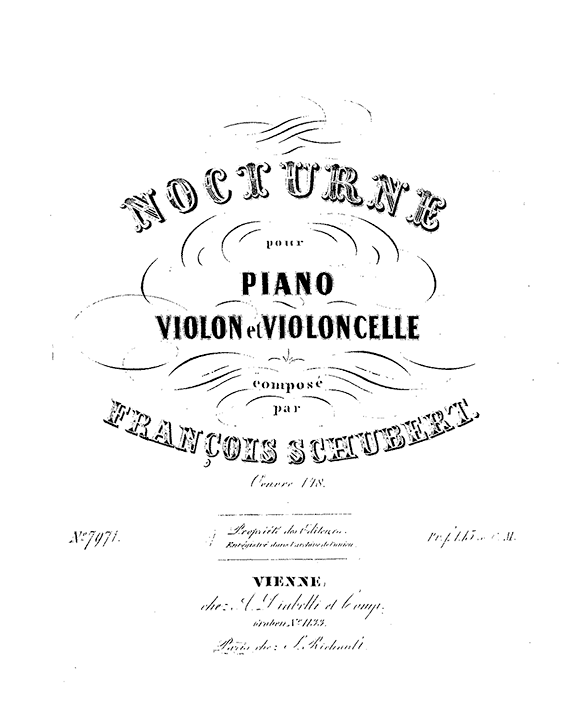Composed 1827-8; 11 minutes
This beautiful, orphaned, slow movement for piano trio is generally believed to have been written as a rejected slow movement for the B-flat Piano Trio Schubert wrote in the last year of his life. Published as Op. 148, almost 20 years after the composer’s death, the title Notturno was written on the score in another hand, and that’s how the piece is often remembered today. It is graceful music, beginning with a gently swaying duet for the strings before shifting a semitone higher – in a typically Schubertian way – into the distant key of E major. Each of these two contrasting melodies is heard in a varied form before a coda, based on the opening theme, brings the short movement back to a calm ending. Like the slow movement of the great C major String Quintet that Schubert wrote in the autumn of 1828, an ethereal mood is created by means of a prolonged, slow-moving, suspended melody which is underpinned by a deep bass and embellished by an upper part. Both movements move to a more animated middle section and then back to an even more serene and more highly decorated melody. So, this gentle Adagio can be imagined as a preliminary draft for Schubert’s greatest slow movement, the Adagio of his String Quintet.

Watercolor of Franz Schubert in 1825

Title page to Schubert’s ‘Notturno,’ published posthumously as Schubert’s Op. 148 by Diabelli in Vienna, 1846